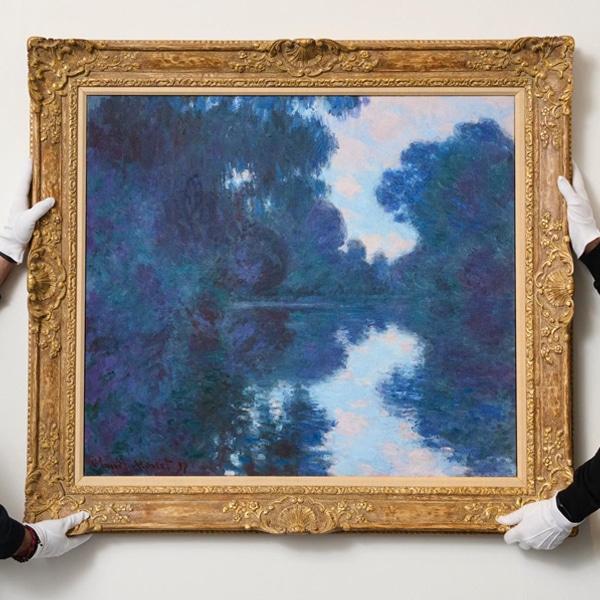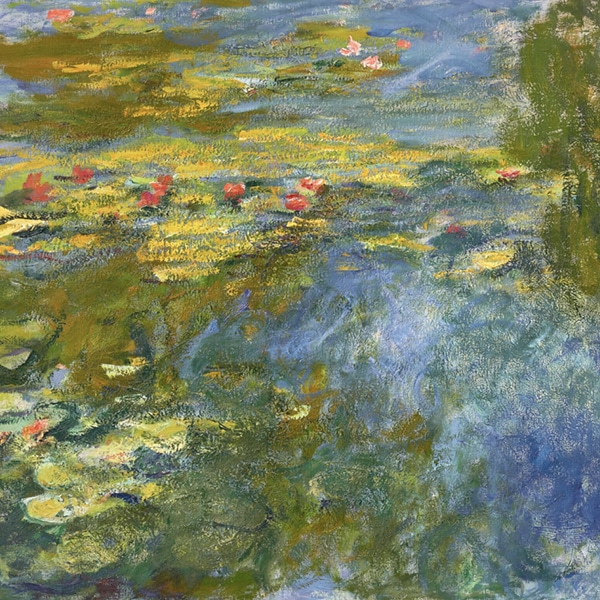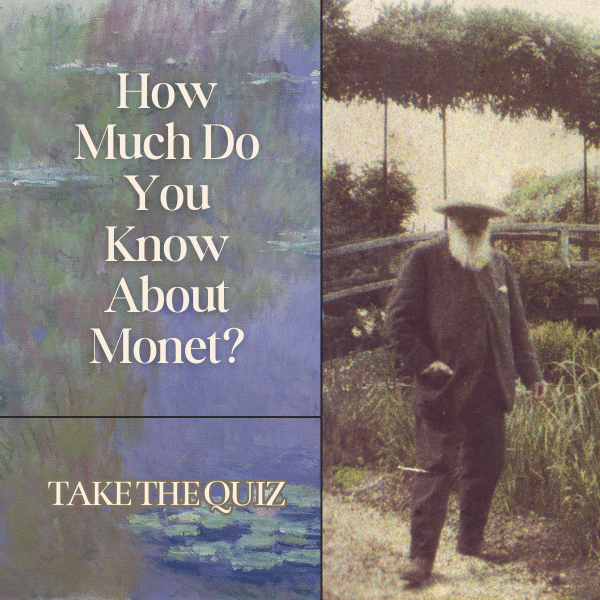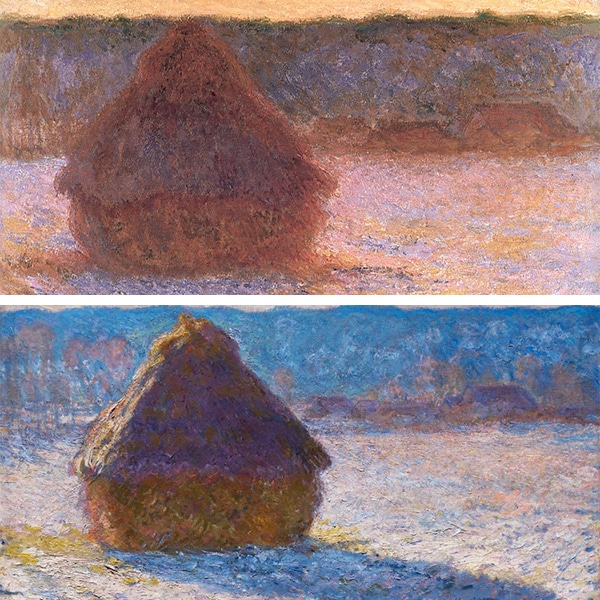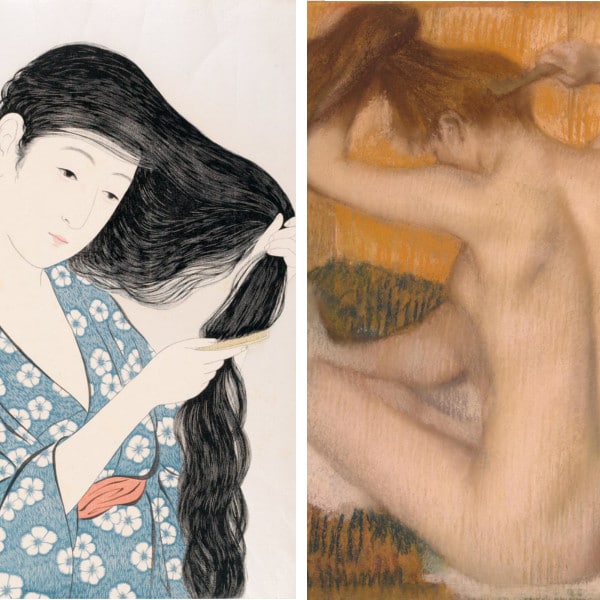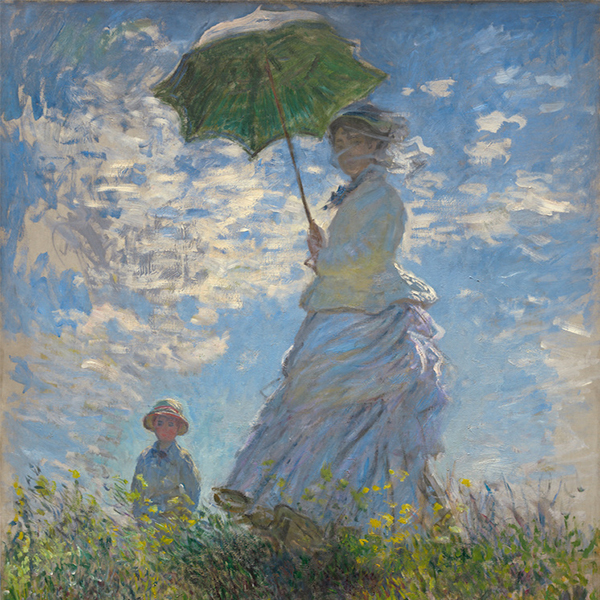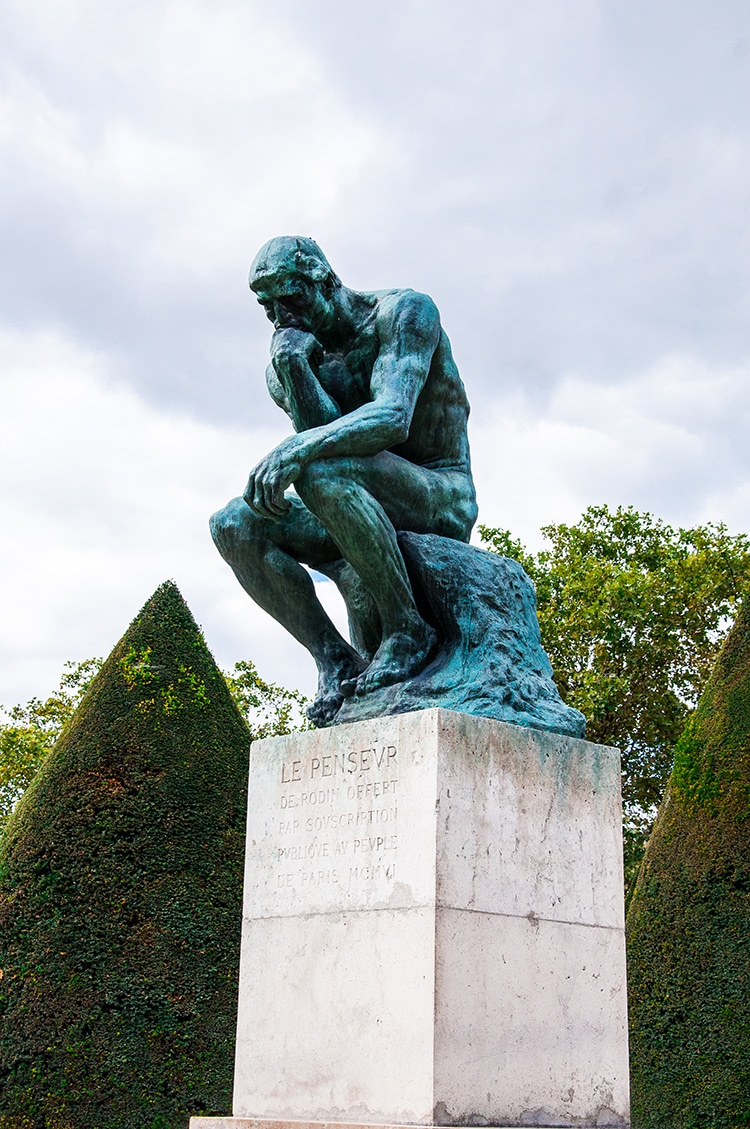
“The Thinker” by Auguste Rodin. (Photo: Stock Photos from YULIIA MYRONIUK/Shutterstock)
Sculpture has been around since ancient days, from the carvings of prehistoric humans to the painted marble busts of the Romans. In the late 19th century, Paris was a hub for Impressionists and other pioneering artists of all mediums. While painters such as Claude Monet and Pierre-Auguste Renoir are widely remembered, their contemporary, sculptor Auguste Rodin, is equally noteworthy.
As the author of one of the most famous sculptures in history—The Thinker—Rodin established himself as France's preeminent sculptor. His talent was not limited to the three-dimensional. His sketches of human subjects are as emotive as the figures he molded in clay. Whether on paper or in bronze, the work of Rodin emphasized naturalism, humanity, and grace in motion.
Scroll down and learn more about Rodin and his incredible work.
The Artist's Early Years
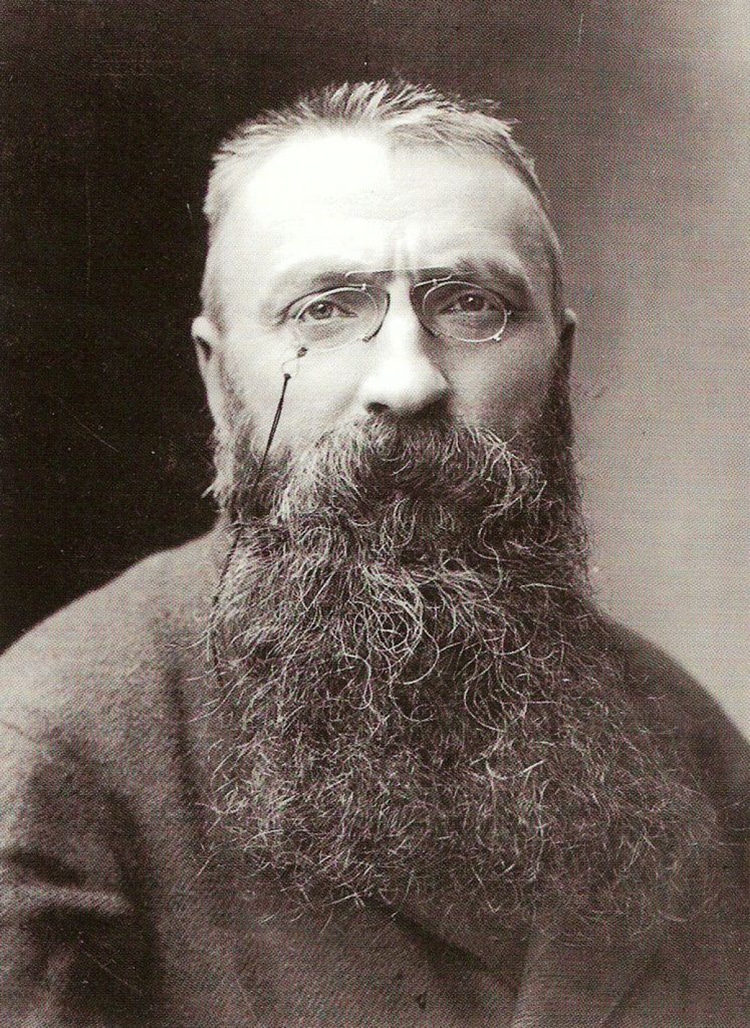
Auguste Rodin, photographed by Nadar in 1891. (Photo: Wikimedia Commons, Public domain)
Full Name | François Auguste René Rodin |
Born | November 12, 1840 (Paris, France) |
Died | November 17, 1917 (Meudon, France) |
Notable Artwork | The Thinker |
Movement | Modern |
Rodin was born in Paris in 1840 to working-class parents. He began drawing as a child before entering formal studies at the Petite École. At 17, he made the first of three unsuccessful attempts to be admitted to the famous École des Beaux-Arts. Although he used a clay sculpture as his application, it apparently did not impress the school. After school, Rodin began working as an artisan, crafting decorative ornaments for mantels and other uses. Aside from a brief desire to take Catholic orders, he continued this line of work for over a decade.
While supporting himself in the decorative arts, Rodin studied fine sculpture under Antoine-Louis Barye—famous for his naturalistic animal sculptures. It is from this teacher that the young sculptor drew the natural depictions of musculature and posture which would become hallmarks of his work. His style was influenced by the sculpture of the 18th century as well as the Renaissance masterpieces of Donatello and Michelangelo; he had a chance to see their works while on a trip to Rome in 1875.
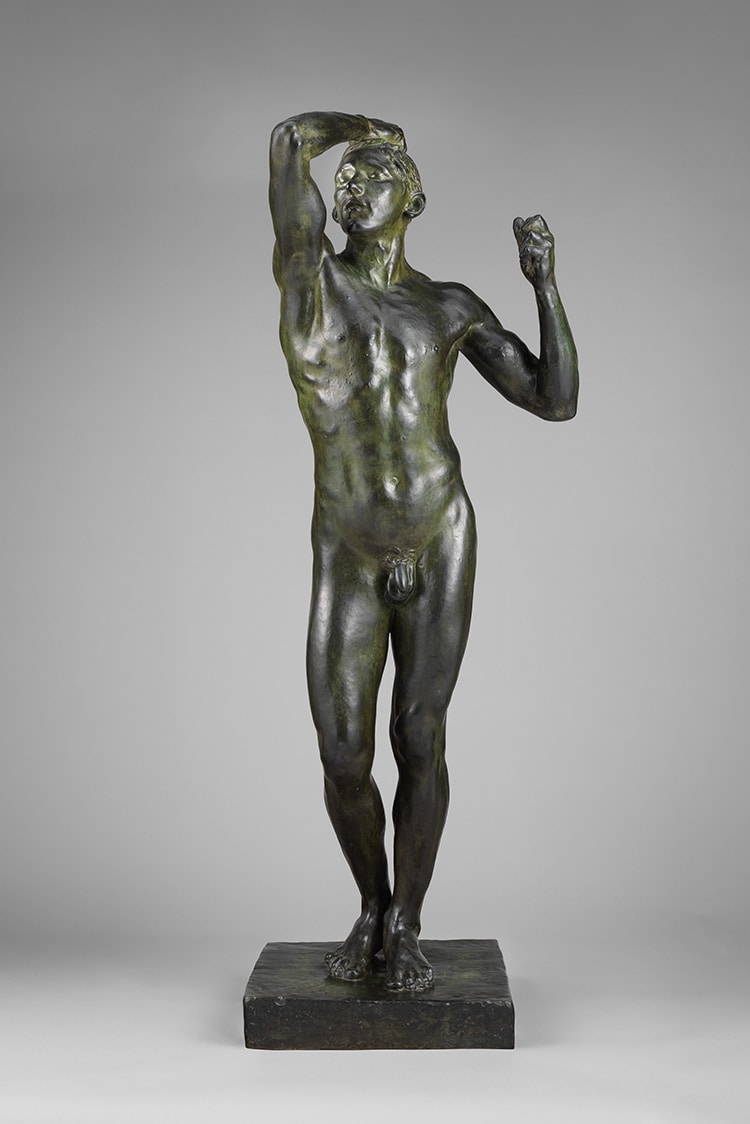
“Age of Bronze,” by Auguste Rodin, modeled 1876, cast circa 1906. (Photo: The Metropolitan Museum of Art, Public domain)
After his studies, he began working in the studio of another successful French sculptor—Albert-Ernest Carrier-Belleuse. The same year the joined the studio, 1866, his son Auguste-Eugène was born. Auguste-Eugène's mother, Rose Beuret, and Rodin had begun their relationship two years prior. While Rodin's commitment to the seamstress often wavered—including an affair with his muse and fellow sculptor Camille Claudel—she was his lifelong companion.
He eventually became Carrier-Belleuse's head assistant and even went with him to Belgium to create decorations for the Brussels Stock Exchange. While the relationship between Rodin and Carrier-Belleuse deteriorated while there, Rodin's time in Brussels and traveling abroad was a crucial moment in his career.
Prior to this, Rodin had exhibited his work in relative obscurity several times during his career in ornamental artistry. But he was living in relative poverty, and it was not until 1877 that he had his big break.
Sculpted in 1876, after returning to Belgium from Italy, The Age of Bronze was a life-sized, naturalistic masterpiece. At the time of its exhibition, Rodin chose to call his work The Conquered Man in reference to the recent French defeat in the Franco-Prussian war. The bronze sculpture apparently caused some stir in Paris. Viewers thought it was too good to be true and that it must have been cast from life. Despite this skepticism, Rodin's career as a “legitimate” sculptor was established.
Still, upon his return to Paris in 1877, he would continue taking on other work to make ends meet, including a long stint as a designer at the famed Sèvres porcelain factory. He worked there part-time until his private art commissions were able to support his family. In the meantime, he began developing relationships with Paris' artistic community and was even invited to show his work at the Paris Salon. When he won the commission to create a portal for a new decorative arts museum in 1880, his reputation was solidified. This commission, known as the Gates of Hell, remained unfinished as Rodin worked on it sporadically for 37 years.
Over the next several decades, as eloquently described by Peter Schjeldahl in The New Yorker in 2017, “With his sensual rendering of flesh, he wrenched figurative sculpture from millennia of tradition and sent it tumbling into modernity.”
Crafted in Clay, Bronze, and Marble
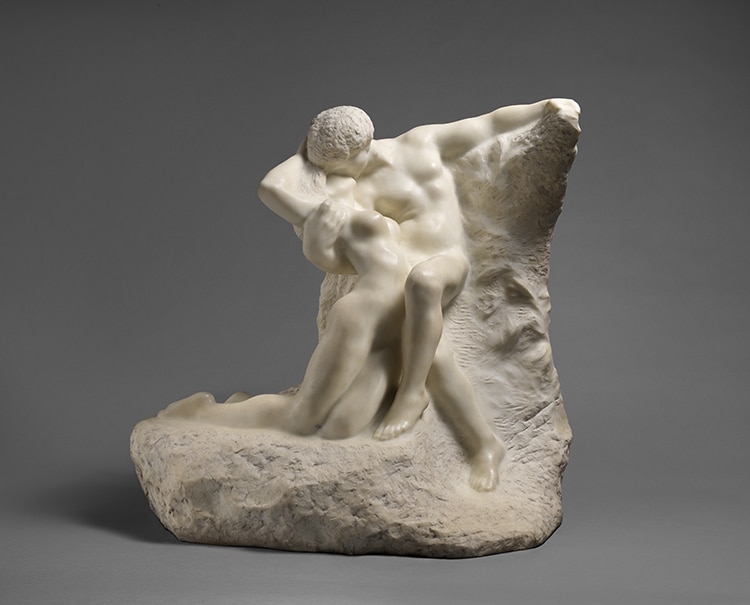
“Eternal Spring,” by Auguste Rodin,
modeled circa 1881, carved 1907. (Photo: The Metropolitan Museum of Art, Public domain)
Many of the sculptor's most famous works are cast in bronze, but the pieces began as clay. Working with live models, Rodin would sculpt small statues with his own hands. These works were then replicated on a larger scale by his assistants. From the clay original, a plaster cast would be made. This cast allowed for multiple commissions or copies of one work to be created. The final sculptures were usually cast in bronze or carved in marble. No matter the material in which the work was rendered, fluidity, naturalism, and vitality are common characteristics of Rodin's figures.
At times, Rodin combined body parts of separate plaster casts to craft new figures. Shown at a solo exhibit in 1900, The Walking Man combined a recycled torso with the legs Rodin had once used for a rendering of St. John the Baptist. Like many of Rodin's sculptures, both the aforementioned displayed the human body in the nude.
Inspired by the greats such as Michelangelo, Rodin's works were popular—although not free of critique—in France. When invited by American curator Sarah Tyson Hallowell to exhibit several pieces at the Chicago World's Fair in 1893, his magnificent marble Cupid and Psyche was considered too risqué for puritanical American sensibilities. The work—and Rodin's other two sculptures—were curtained off for the curious to peek at. Guided by Hallowell, American collectors began to turn their eyes to the French artist.
Legendary Works by Rodin
Mask of the Man with the Broken Nose
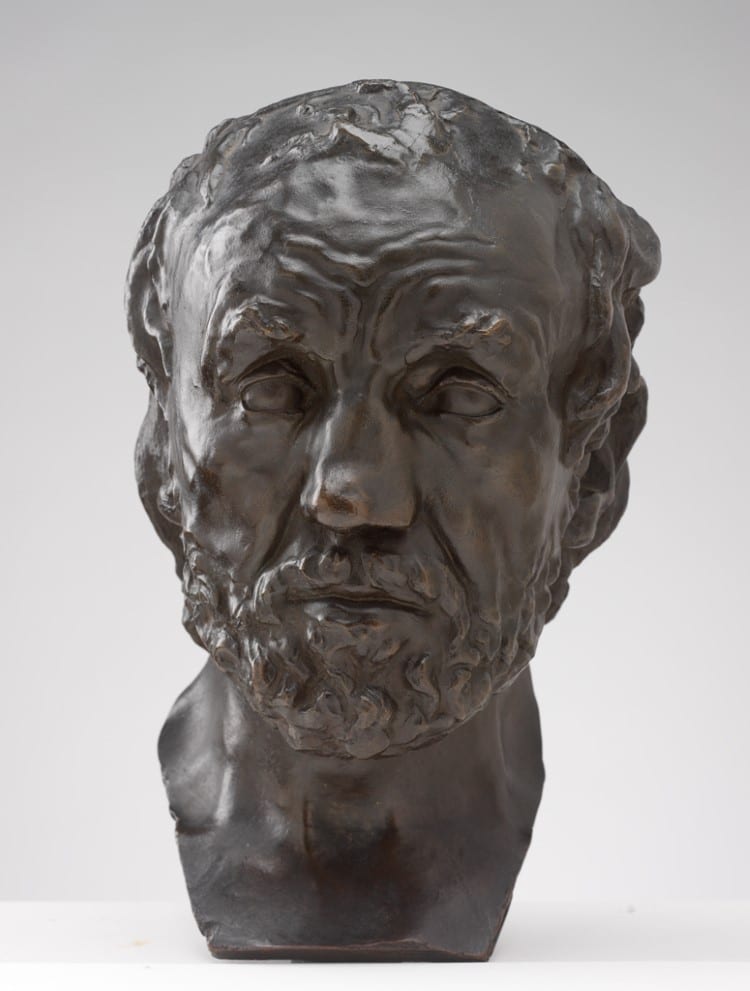
“Mask of the Man with the Broken Nose,” modeled 1863 – 1864, cast before 1882. (Photo: RISD, Public domain)
This early sculpture by Rodin was created between 1863 and 1864, but wasn't approved by the Paris Salon un 1875. It was originally rejected because it deferred from the idealized portraits that were commonly accepted. Rodin, however, was proud of the work and said it informed all his later sculptures. He used an amateur model—a worker named Bibi—for the sculpture and favored showing his features, flaws, and all. The deep wrinkles and distorted features were of great interest to Rodin.
The Thinker
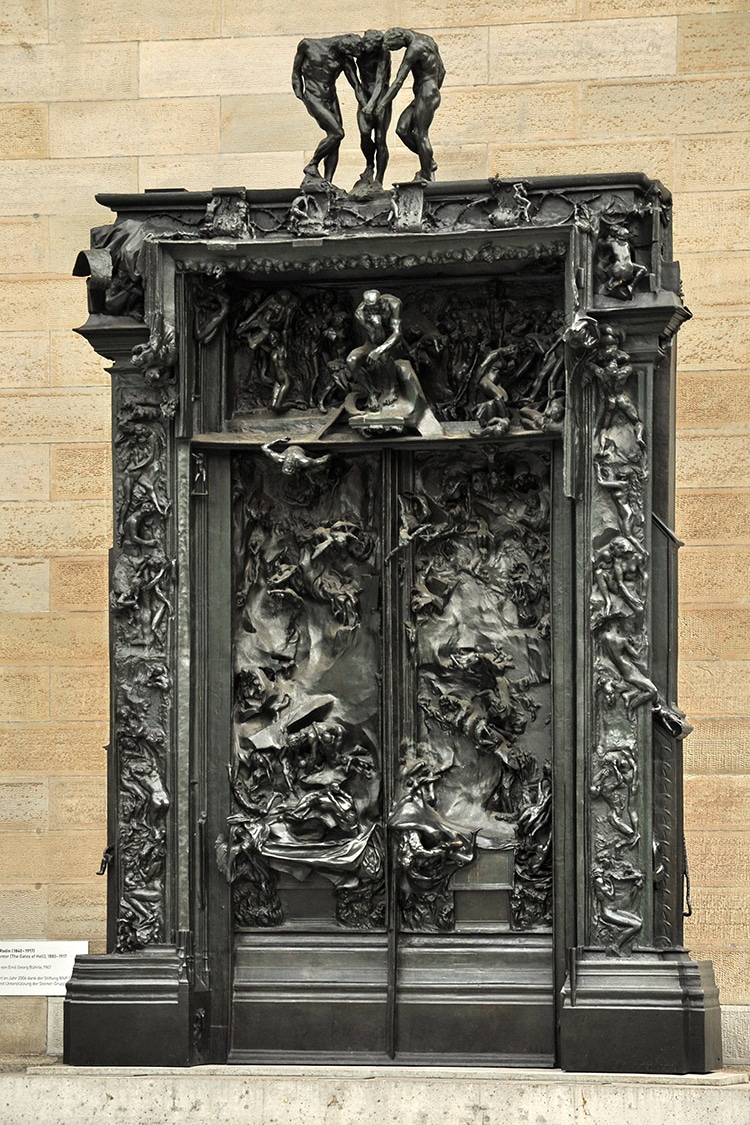
“The Gates of Hell,” by Auguste Rodin, a modern copy made from the original plaster, displayed in Zurich. (Photo: Roland zh via Wikimedia Commons, CC BY-SA 3.0)
While his drawings remain relatively uncelebrated, Rodin is one of the most famous sculptors of modern times. His most well-known work—The Thinker—was initially sculpted as part of a larger work commissioned in 1880 by the proposed Decorative Arts Museum in Paris. In the form of massive bronze doors, The Gates of Hell became Rodin's longest project, upon which he labored for 37 years. The 20-foot-high masterpiece never had a home in the museum, as those plans came to nothing.
However, Rodin's sculpture became important in its own right. The figures of the door allegorically and literally illustrate Dante's Inferno, part of the Renaissance epic The Divine Comedy. In this work, Rodin demonstrated his immense talent in illustrating emotion through the human body. Both before and after his death, the overlooking figure on the mantel of the gates (known as The Thinker) would be cast many times and become an important cultural touchstone.
The Kiss
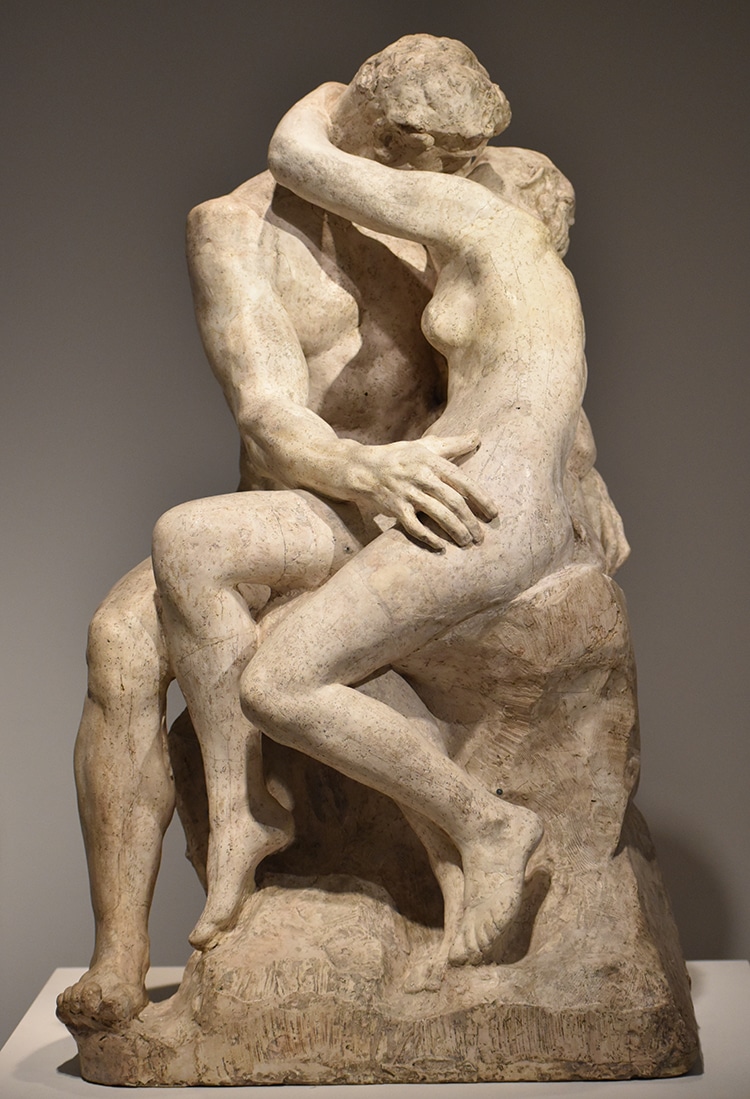
“The Kiss,” by Auguste Rodin, c. 1881-1882. (Photo: Tylwyth Eldar via Wikimedia Commons, CC BY-SA 4.0)
Despite the fame of his pensive masterpiece, other works by Rodin are well known and housed in some of the most prestigious collections around the world. Among the other figures created for The Gates of Hell are a couple entwined in The Kiss. The figures were originally in Rodin's larger hell-inspired work but were later extracted for being too happy for hell. The erotic love scene was one of the statues that scandalized the American public; however, the French government actually commissioned a copy of the work.
The Burghers of Calais
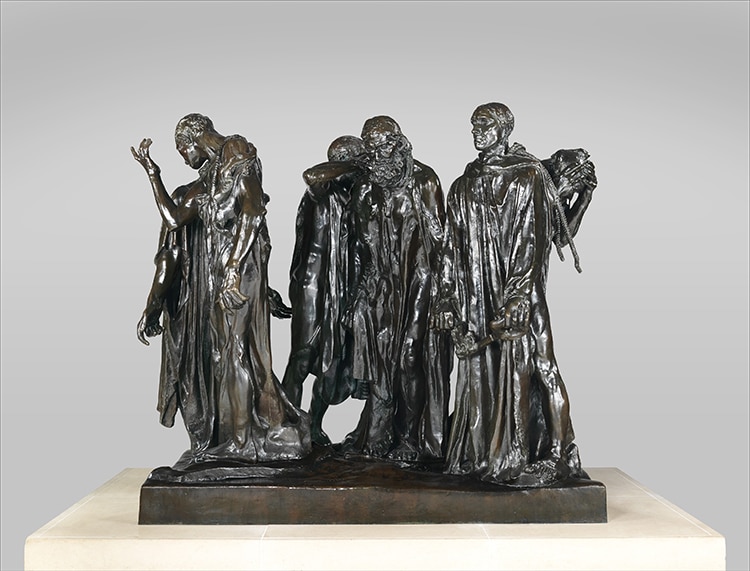
“The Burghers of Calais,” by Auguste Rodin, modeled 1884–95, cast 1985. (Photo: The Metropolitan Museum of Art, Public domain)
Rodin, like most artists, worked on commission. Among those who requested a monument was the French channel-side town of Calais. Rodin's The Burghers of Calais debuted in 1889. It immortalized the six burghers (wealthy men with privileges of the town) who, in the 14th century, volunteered to be martyrs to the English to spare their townsmen. A monument to the various emotions which may be expected of martyrs, the figures were meant by the artist to be displayed on ground level (eye-level to the townspeople). However, the work was elevated on a pedestal in the end.
Monument to Honoré de Balzac
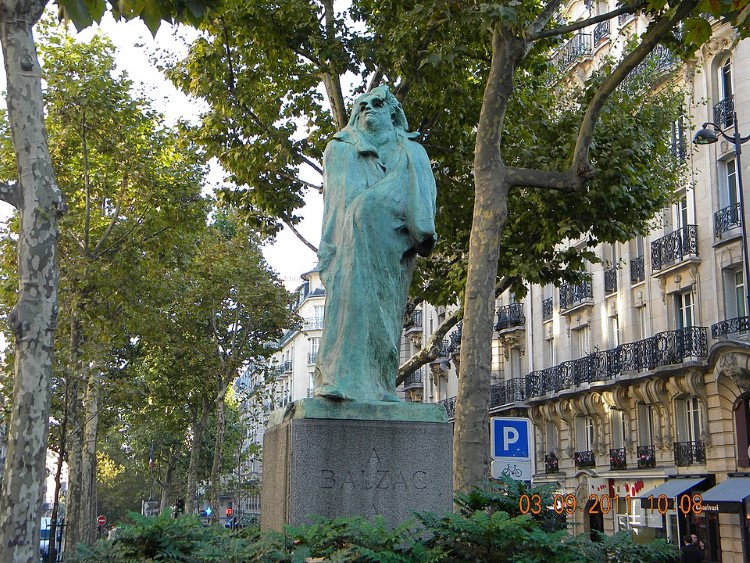
“Monument to Honoré Balzac,” by Auguste Rodin, modeled 1892–1897, cast 1939. (Photo: Britchi Mirela via Wikimedia Commons, CC BY-SA 3.0)
As a member of the artistic milieu of Belle Époque Paris, Rodin was commissioned to design monuments upon the passing of French literary legends Victor Hugo and Honoré de Balzac. Both commissions caused a stir, as Rodin's pioneering style was not what the public expected to honor their heroes.
In the case of Balzac, he focused on capturing the writer's persona rather than his likeness. However, his vision was not to the liking of the Société des Gens de lettres de France (Society of Men of Letters of France), which commissioned the piece. His depiction of Balzac was defended by fellow Parisian artists, including Claude Monet and Claude Debussy. In fact, the artistic community raised the funds to have it cast, but Rodin declined and kept the plaster cast in his home. It was only well after his death, in 1939, that the Monument to Balzac was cast in bronze. Today it stands in Paris at the intersection of Boulevard du Montparnasse and Boulevard Raspail.
While not strictly an Impressionist, Rodin was a man apart. As Schjeldahl wrote about Rodin and his working-class brethren Renoir, “Their training in commercial aesthetics, aimed to please, distinguished them from their more privileged and urbane Impressionist and Post-Impressionist contemporaries. They loved flesh, which Rodin sensualized and Renoir prettified, both shamelessly. Rodin had no avant-gardist desire to reject academic convention, which, nonetheless, rejected him.”
The Impressionists bucked tradition, and Rodin defied explicit categorization even with the artistic legends of his day.
Rodin's Works on Paper

“The Abandoned,” by Auguste Rodin, 1898–1907. (Photo: The Metropolitan Museum of Art, Public domain)
Rodin is primarily remembered as a sculptor, but his artistic practice was grounded in pen and paper. Over his career, he created over 10,000 drawings—including many nudes. Late in his life, Rodin said, “It’s very simple. My drawings are the key to my work.”
Although they were not typically used to plan sculpted works, the drawings were part of a larger focus on human form and the emotions of the body. With the same attention to movement as Degas observing the ballerinas, Rodin's sketches ranged from quick studies to the heavily allegorical. Beginning around 1900 with an exhibit of his works on paper at the Exposition Universelle in Paris, Rodin began titling his sketches with allegorical implications and names such as The Abandoned.
Rodin Today
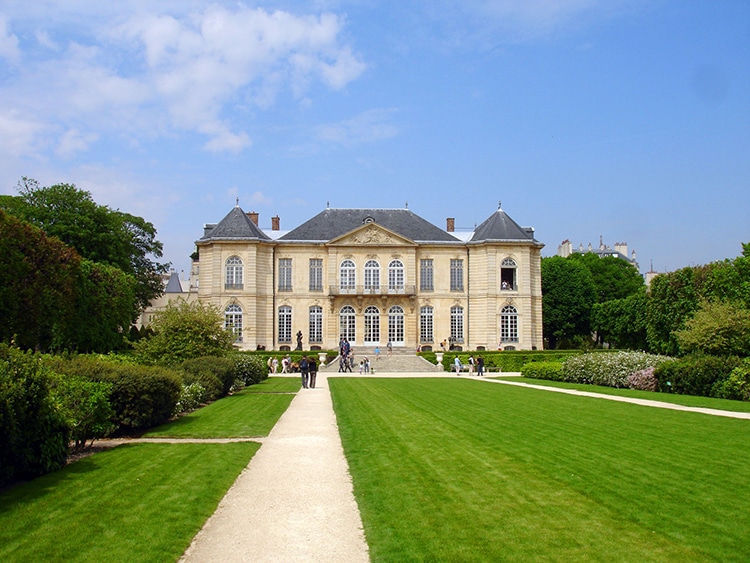
The Rodin Museum, Paris. (Photo: Michael Scaduto via Wikimedia Commons, CC BY-SA 2.0)
Rodin passed in 1917 as a renowned name in artistic circles and is heralded for his creative genius. Today, his work is found in museums and as monuments around the world. However, the place to be for any fan of the late sculptor is the Musée Rodin in France. Based at the Hôtel Biron and its gardens in Paris—with a second location at Rodin's former home in Meudon—the museum hosts thousands of sculptural and paper works. The collections also include the works acquired by the artist himself, such as a vast holding of contemporary photographs. Visitors will also find some of the artist's collection of ancient sculptures. Worth a visit any time you are in Paris, the Musée Rodin will interest and surprise even ardent fans of Rodin.
Frequently Asked Questions
Why is Rodin's work so important?
Rodin revolutionized sculpture because he worked outside the traditionally accepted style of his time. After rising up from working as a decorator, his fine art forged a new path. He created sculptures that were not idealized versions of their models, but showed highly expressive versions of individuals. For this reason, Rodin is considered the father of modern sculpture.
Was Rodin inspired by Michelangelo?
Yes, when Rodin traveled to Italy in 1875, he fell in love with Michelangelo's sculpture. He would create drawings after Michelangelo's work and once wrote, “the great magician is going to give me some of his secrets.” His later attention to contours and exaggerated musculature can be directly traced back to the work of the great Italian master.
Where can I find Rodin's sculptures?
Rodin's sculptures can be found in collections around the world. It is not unusual to find multiple bronze casts of the same piece. However, true lovers of Rodin will want to visit the Musée Rodin in France. Located in the artist's former home, it is filled with his sculptures, as well as works on paper.
This artist has been edited and updated.
Related Articles:
15 Great Sculptors Who Changed the History of Art
6 Facts About Rosa Bonheur, France’s Most Celebrated Painter of Animals
Henry Ossawa Tanner: The Life and Work of a 19th-Century Black Artist
Who Was Antonio Canova? Learn About This Important Neoclassical Sculptor











































































